Rooting campsis and methods of its propagation
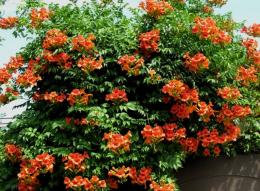
Probably, at all times, those who have a private house or a summer cottage have always tried to decorate it beautifully with plants. One of these plants that serves more for decorating areas, gardens and buildings is Campsis rooting or Tecoma rooting. Since it is very tolerant of trimming, thanks to which any shape can be created from it.
Content:
Appearance of Campsis rooting

Kampsis taking root is liana, which belongs to the Bignoniaceae family of the genus Campsis, perennial plants. Its vine is deciduous, woody and climbing. It grows very quickly and can reach a height of up to 15 meters. The plant is light-loving, with branches and aerial roots.
This plant comes from North America and has very beautiful funnel-shaped flowers, reminiscent of a gramophone trumpet, which reach a length of up to 9 cm and a diameter of up to 5 cm, and has a 5-lobed calyx.
It blooms with bright beautiful flowers in two shades: orange-red and scarlet. From the beginning of summer until frost, since the flowers do not open all together, but one by one. It spends the entire winter in hibernation. Although the plant is heat-loving, due to its origin it can withstand short severe frosts down to -20 degrees.
As for the leaves of Campsis, they are imparipinnate with a clove. The color simply “plays”, moving from green (top) to lighter.It has an oblong oval shape, up to 20 cm long, up to 11 pieces per vine.
It also has bi-valve pod-like fruits, shaped like a flat box, reaching from 5 to 12 cm in length. When the fruits ripen, they crack at the seams. Inside them there are dry flat seeds that look like “wings”, which gives them good volatility. These seeds are scattered over long distances due to the winds. Although bees simply adore these plants, not all flowers bear fruit. Although bees pollinate them, they do not produce their own pollen.
Reproduction of Campsis

There are many ways reproduction Campsis rooting:
- Seeds. Campsis reproduces with its seeds. But they need to be planted in the spring. To do this, during the period of seed ripening, they need to be collected. They can easily survive winter, but only in warm climates and in dry places. With the arrival of spring, these seeds are planted in boxes with loose soil that retains moisture well. The planting depth is small - up to half a centimeter. If the temperature is optimal (+25 degrees), then the seeds will sprout within a month. And they can be transplanted to a permanent habitat when up to 6 leaves appear. But this method is very rare in propagating this plant. Since it will begin to bloom only after 7-8 years.
- Green cuttings. This method is one of the most effective and the survival rate of the plant is almost 90%. Reproduction occurs during the period of the beginning of flowering, that is, at the beginning of summer. To do this, green shoots are cut out from the central part of the shoots, leaving 2-3 leaves. Choose an area so that direct rays of the sun do not fall. The soil should be fertile, loose and moist. They're imprisoning cuttings at an angle and covered with leaves so that the humidity is maintained as long as possible and there is shade.
- Lignified cuttings. With such propagation, the survival rate of the plant reaches almost 100% of the result. Woody cuttings from Kampsis are cut as soon as the snow has melted, still from the growth of shoots from last year. For such cuttings, you can immediately select a permanent plant location and plant them in the same way as green cuttings at an angle in moist and loose soil.
- By layering. This propagation is used for shoots that grow low to the ground. They are simply planted in damp soil and that’s it. They take root very quickly. And starting next spring they can be transplanted to a permanent habitat.
- Root cavity. There are a lot of processes around the adult Campsis. Even before the plant actively grows, such a shoot is cut off along with the root and planted in the desired place of the plant.
Pruning, wintering and growing problems

Concerning trimmings Campsis, you don’t need to cut it very often. Because it will not grow higher than necessary. You just need to watch and make sure it doesn’t grow like a “sloppy” bush.
As they say, “we are not afraid of frosts” - this also applies to Campsis. But still there is always a limit. If the winter is not very cold, then he will survive it normally. But if suddenly severe frosts above -20 degrees drag on for a long time, then still try to provide it with shelter. If suddenly in the spring it seemed that it was frozen, then this may not be true. It just takes a long time for him to wake up from the winter season.
Campsis rooting is not only a very beautiful plant, but also very strong. Almost no diseases affect him. But you need to remember, although he is thermophilic, he cannot tolerate sultry heat.It needs to be watered often, otherwise it will start aphid. If this happens, to get rid of it enough, spray Campsis with an alcohol solution of laundry soap.

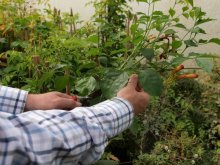
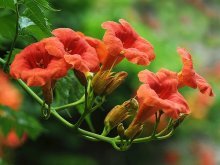

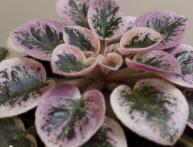
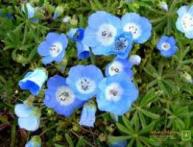
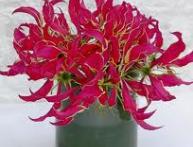
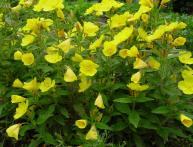

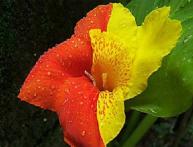

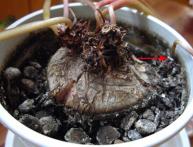
Comments
A familiar plant. They wrote the truth about the frosts. About 10 years ago they were not so strong and the red “liana” lived with us for 4 or 5 years, but for 1 winter we did not cover it and it froze. Then they planted it one more time, but unfortunately the new plant did not take root.
And this was the first time I saw such a beautiful plant and learned about it! But here in the North-West, Campsis is unlikely to take root - our winters are quite cold.